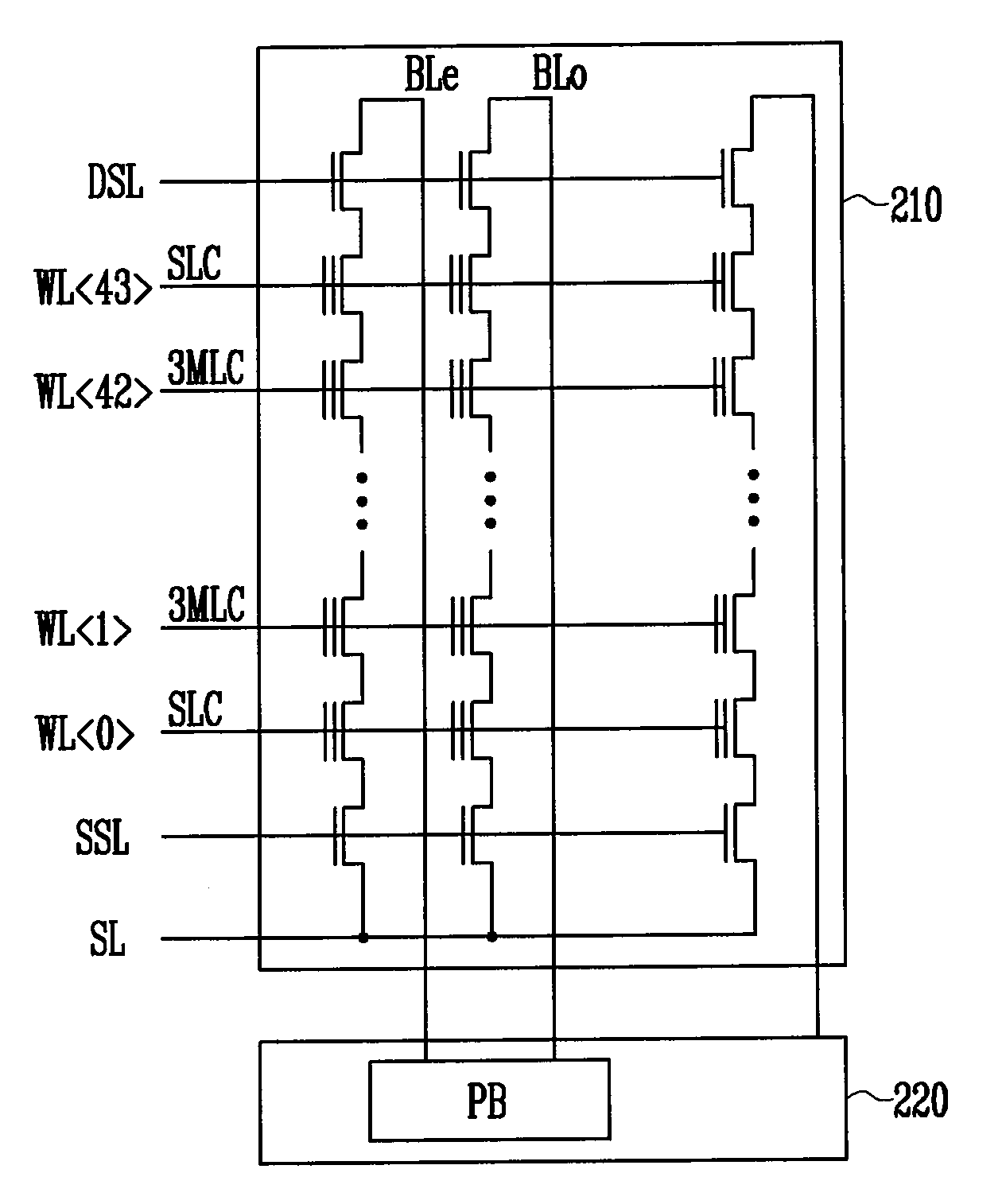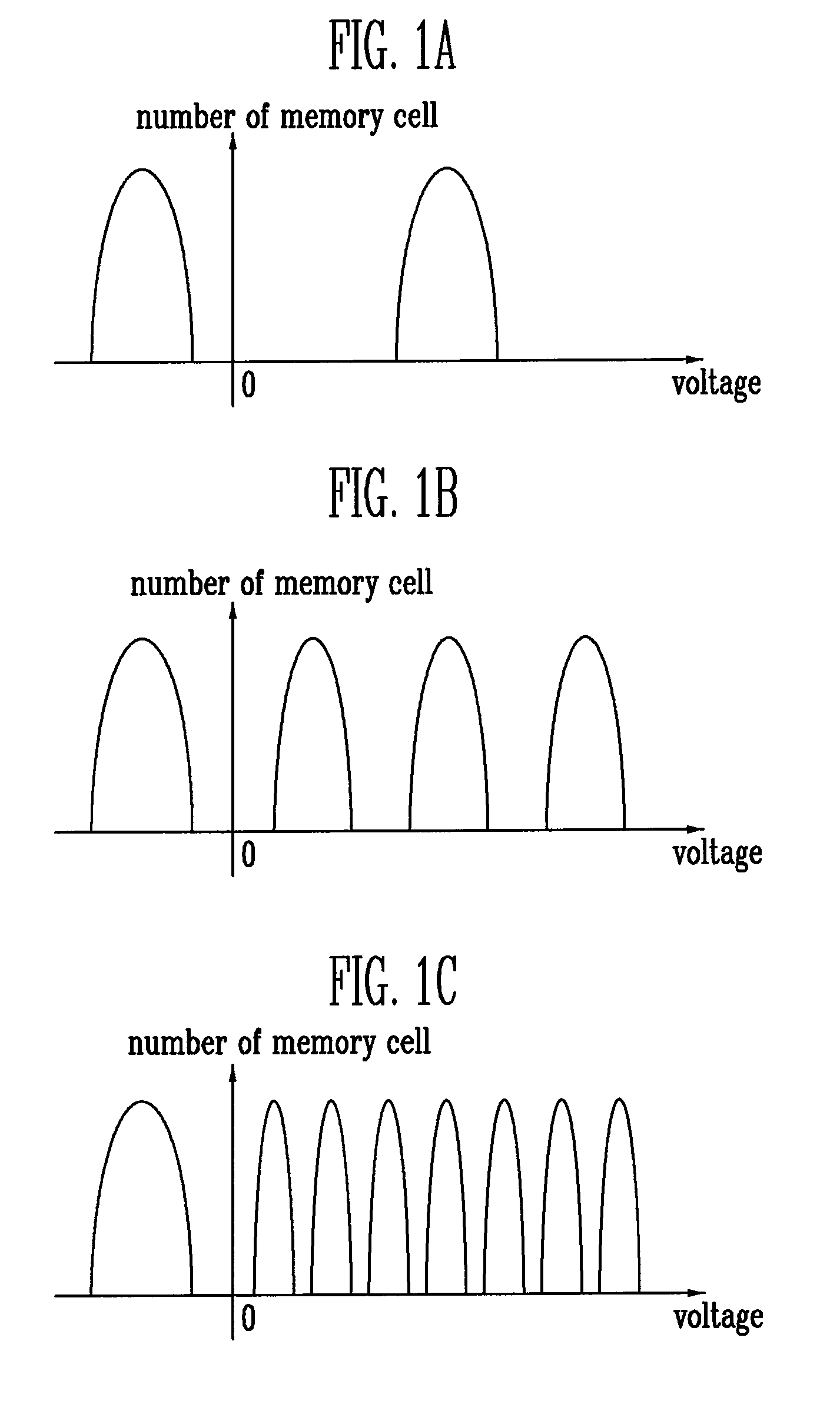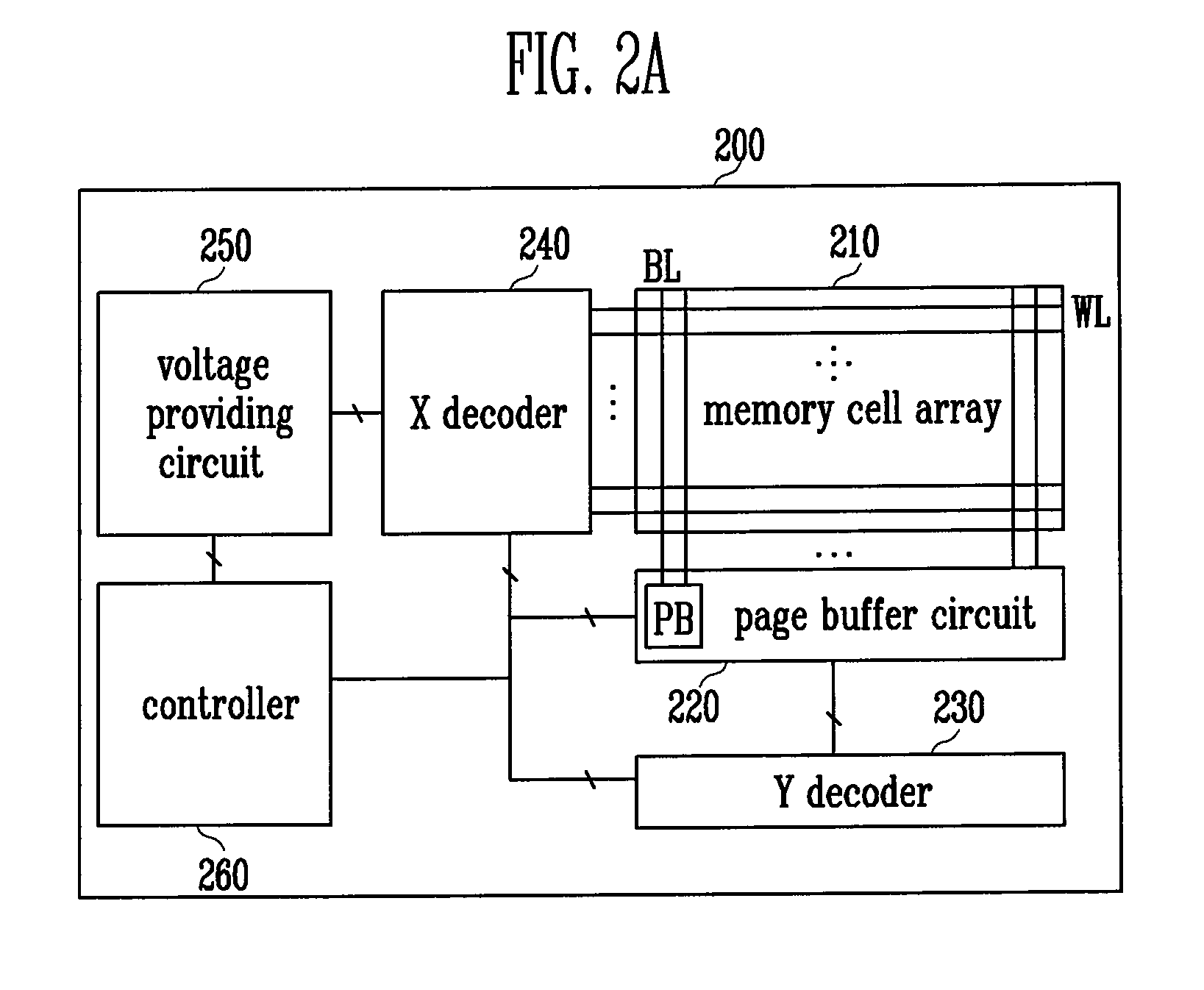Non-volatile memory device
a memory device and non-volatile technology, applied in static storage, digital storage, instruments, etc., can solve the problems of difficulty in controlling the interval between the threshold voltage and the width of the threshold voltage distribution, and achieve the effect of increasing the number of word lines and augmenting storage capacity
- Summary
- Abstract
- Description
- Claims
- Application Information
AI Technical Summary
Benefits of technology
Problems solved by technology
Method used
Image
Examples
Embodiment Construction
[0039]Hereinafter, the preferred embodiments of the present invention will be explained in more detail with reference to the accompanying drawings.
[0040]FIG. 2A is a block diagram illustrating a flash memory device.
[0041]In FIG. 2A, the flash memory device 200 includes a memory cell array 210, a page buffer circuit 220, a Y decoder 230, an X decoder 240, a voltage providing circuit 250 and a controller 260.
[0042]The memory cell array 210 has cell strings in which memory cells for storing data are coupled in series. Each of the cell strings is coupled to a corresponding bit line BL. In addition, gates of the memory cells are coupled to corresponding word lines WL in a direction vertical to the bit lines BL.
[0043]The page buffer circuit 220 includes a plurality of page buffers PB coupled to the bit lines BL of the memory cell array 210. Each of the page buffers PB temporarily stores data to be programmed in a selected memory cell and then transmits the stored data to the memory cell t...
PUM
 Login to View More
Login to View More Abstract
Description
Claims
Application Information
 Login to View More
Login to View More - R&D
- Intellectual Property
- Life Sciences
- Materials
- Tech Scout
- Unparalleled Data Quality
- Higher Quality Content
- 60% Fewer Hallucinations
Browse by: Latest US Patents, China's latest patents, Technical Efficacy Thesaurus, Application Domain, Technology Topic, Popular Technical Reports.
© 2025 PatSnap. All rights reserved.Legal|Privacy policy|Modern Slavery Act Transparency Statement|Sitemap|About US| Contact US: help@patsnap.com



